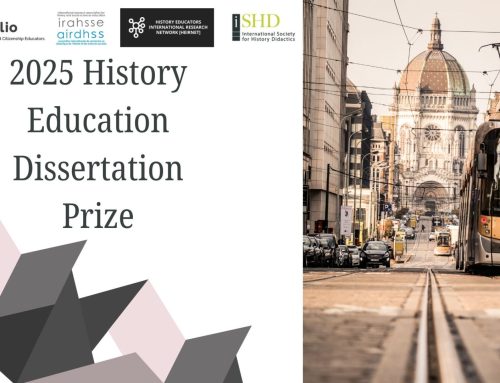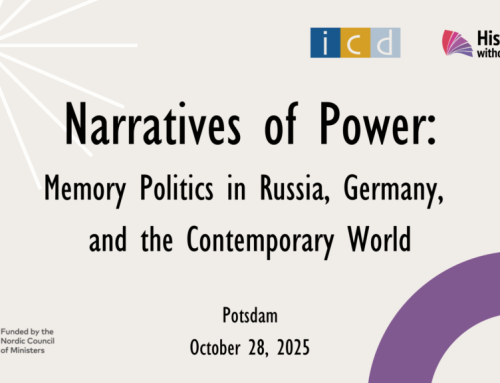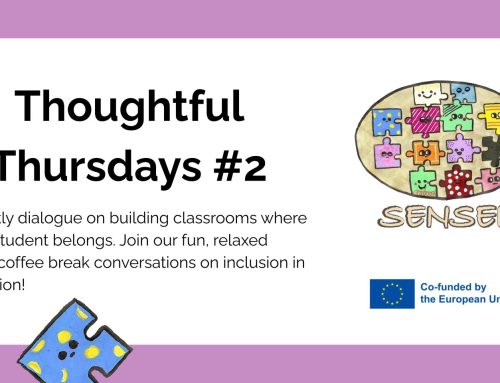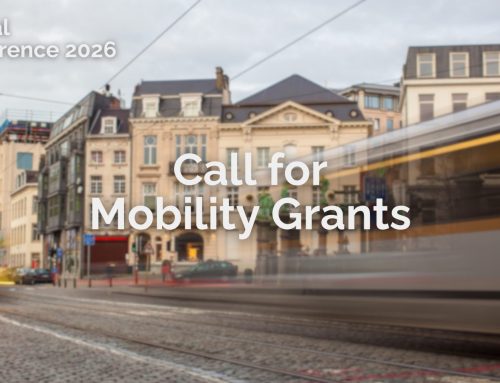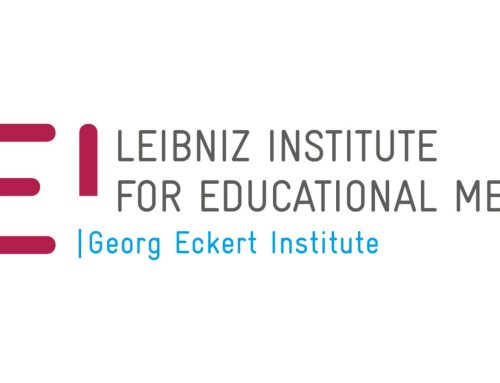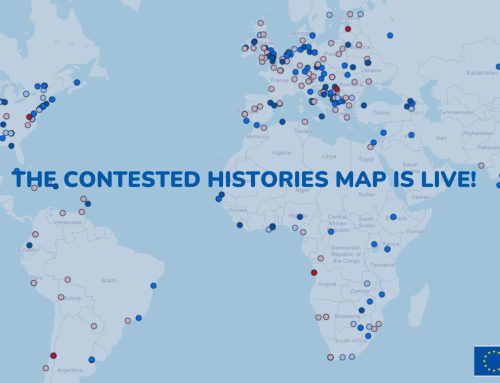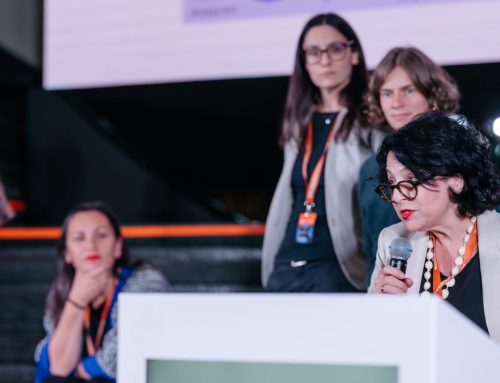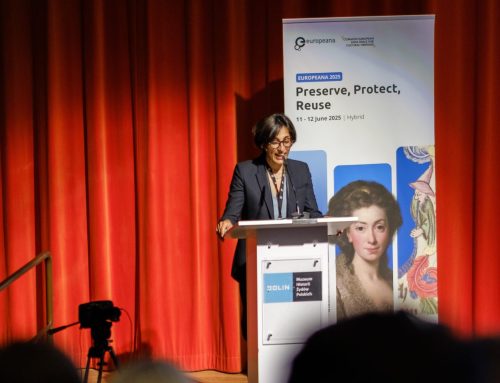Bjorn Wansink in conversation with Bojana Dujković Blagojević and Melisa Forić Plasto
This interview-article is written in relation to the thirtieth remembrance of the Srebrenica genocide. In the Netherlands, commemorative events will be held in The Hague, and various organizations are developing educational materials for Dutch teachers. Although the Dutch state has been held partly responsible for the genocide, it still receives limited attention in Dutch education (Mustavić, 2022; van Berkel, 2020). When it is addressed, the focus tends to be more on the role of Dutchbat—the Dutch UN soldiers who were unable to prevent the genocide—than on the victims themselves. Additionally, there is little public awareness in the Netherlands about the complexities and ongoing challenges surrounding history education in Bosnia and Herzegovina.
To better understand how history is taught in Bosnia and Herzegovina and the key dilemmas involved, Bjorn Wansink spoke with two experts in the field. Bojana Dujković Blagojević is a specialist in history education who has worked extensively with NGOs such as EuroClio and the European Wergeland Centre. Her focus lies in teaching sensitive and controversial topics related to the history of the former Yugoslavia in the 20th century. Melisa Forić, a senior teaching assistant and researcher at the University of Sarajevo, has written several articles on history education in Bosnia and Herzegovina. This article takes the form of an interview with these two experts.
What are the key goals of history education, from your personal perspective as educators?
Bojana emphasizes that a central goal of history education is to help students understand that history, as presented in textbooks, is an interpretation—shaped by sources, biases, and prejudices. She believes students should learn to read between the lines, to think critically, and to draw their own conclusions rather than passively absorb information.
Melisa agrees and adds that history education should develop students' ability to think critically, ask questions, and analyze the past. Beyond academic skills, she believes education should uphold core human values such as equality, respect, and peace.
The education system in Bosnia and Herzegovina is known for its complexity. Could you briefly explain its main features?
Melisa, who recently defended her PhD on the politics of education in Bosnia and Herzegovina, explains that the country essentially has three main education systems, each aligned with the country's major ethno-national groups (Plasto, 2025). This structure stems from constitutional guarantees that citizens have the right to education in their own language.
The country is divided into three administrative units: the Federation of Bosnia and Herzegovina (FBiH), Republika Srpska (RS), and the Brčko District. However, the situation is even more fragmented. Within the Federation, for example, there are ten cantons, each with its own Ministry of Education. The ethnic majority in each canton often determines the language of instruction and the content of the curriculum. Some cantons are predominantly Bosniak, others Croat, and some are mixed. In some cases, two schools can share the same building but follow entirely different curricula and use different history textbooks. Melisa notes that there is no national Ministry of Education to oversee and coordinate history teaching across all regions.
Although there have been several attempts to create a more unified, state-level history curriculum, these efforts have largely failed. Often, new ideas were superficially inserted into existing curricula without changing the underlying content. If changes were made, these were mostly quite technical, like the number of the pictures or the number of the sources, that must be included in the textbook. As a result, each canton retains significant autonomy, and most history curricula remain strongly ethno-national in orientation—exacerbating divisions and tensions between communities.
Who Makes and Controls the History Textbooks?
Melisa, this is not an easy question to answer. In practice, each Ministry of Education decides which textbooks are approved for use. In some regions, pedagogical institutes or educational inspectorates provide general guidelines on what textbooks should look like and who can write them. The availability of multiple textbooks depends on the region. For example, in Republika Srpska, there is only one mandatory history textbook per grade, leaving no room for choice. In contrast, in areas where Bosnian and Croatian are the languages of instruction, teachers can choose from two or three available textbooks. In these regions, the textbook market is more open.
However, we must also consider the broader context. Bosnia and Herzegovina is not a wealthy country, which means many parents hesitate to buy new textbooks, especially if they have multiple children. This is the case for all school subjects. As a result, old history textbooks remain in use for many years. In Republika Srpska, this situation is sometimes used as an excuse to avoid discussions about updating textbooks or reforming history education.
Additionally, there are serious concerns about political corruption in the process of selecting publishing houses. Certain publishers are granted exclusive rights to publish textbooks, often due to political connections rather than quality or merit. Teachers themselves are rarely consulted about textbook content. Bojana, for instance, mentioned that in her entire career, she has never heard of an open call for textbook reviewers. While commissions do exist to evaluate textbooks, these are often politically appointed and aligned with the ruling party.
The situation is particularly unique regarding Croatian-language textbooks. Only two publishing houses produce them, and both are subsidiaries of publishers based in Zagreb. When you open one of these textbooks, the layout, text, and design are nearly identical to those used in Croatia. It's even noticeable in small details—for example, Bosnia has a nine-year elementary education system, whereas Croatia has eight. Yet, in a ninth-grade textbook used in Bosnia, the footer still reads "History 8," clearly copied from the Croatian system without any adaptation. It's a remarkable and also troubling situation.
What About the Content of History Textbooks?
The content of these textbooks is, in general, highly nationalistic—especially when it comes to the war (Foric Plasto, 2020). Melisa pointed out that narratives about the war began forming during the conflict itself and have since remained largely unchanged in textbooks. Bojana added that the war is presented in very different ways depending on the ethnic group. Even the terminology varies: in each of the three languages used in Bosnia and Herzegovina, the word for "war" differs. This linguistic distinction immediately signals a person's ethnic background and shapes how the war is understood.
The most divisive question is: who started the war? Different groups have completely different answers, and even the nature of the war is disputed. Was it an act of aggression? A war for national liberation? A civil war? There is no shared historiography, and this lack of consensus is deeply embedded in the education system.
Bojana also highlighted another issue: she thinks that maybe over 80% of history teachers have some personal connection to the war. Many were either directly involved or had close family members who were affected. This inevitably brings personal biases and trauma into the classroom. With little oversight or regulation of how history is taught, imagine having a former soldier, refugee, or someone whose family was imprisoned during the war as your teacher—it's a highly emotional and subjective environment.
According to Bojana, Bosnia and Herzegovina has not yet truly faced its past. Reconciliation hasn't even begun. She mentioned that even within her own family, views on the war differ significantly, and most people avoid discussing it in depth.
Conflict and multiperspectivity
Melisa, who works as a teacher educator, once organized a film screening for her students featuring veterans from all three sides of the conflict, who spoke openly about the atrocities committed by all parties. Afterward, some students stood up and protested, insisting they needed to know clearly who the aggressor and who the victim was. The veterans were shocked that young people—who hadn't even lived through the war—held such rigid, one-sided views.
This highlights a major issue: young people form their understanding of the war through family stories, education, and media, all of which are heavily biased. Their entire value system is built upon these narratives. Even today, the legacy of the war remains a battlefield of competing stories.
Melisa noted that a moratorium on teaching about the war was in place from 2000 to 2018, which she viewed as a positive step as the nationalistic stories at least did not infiltrate the schools. Unfortunately, during that time, nationalistic media outlets filled the gap by producing biased documentaries, and professional historians largely remained silent. Even now, textbooks lack a multi-perspective approach. They are written from a single viewpoint, often emphasizing the suffering of one's own group while ignoring or minimizing the wrongdoing committed by them.
The Challenge of Adopting a Different Perspective
Melisa and Bojana are both working toward fostering a more open and critical perspective on the war in education. However, this endeavor is neither easy nor without risks. Melisa, for example, often faces criticism for advocating a multiperspective approach to history. Melisa points out that only an emphasis on patriotism can lead to a distinctive, particular and one-sided narrative, which distorts the complexities of history. Unfortunately, there is no institution in power capable of challenging the one-sided, nationalistic narratives often found in textbooks. Instead of encouraging a more nuanced understanding, history education remains heavily politicized. This issue becomes especially pronounced during election periods when politicians seize the opportunity to critique textbooks, accusing them of glorifying war criminals or omitting significant aspects of the war. This leads to a cycle of reactions, with politicians from other regions pushing for changes in textbooks based on their own political agendas.
Teaching About Srebrenica
When it comes to teaching about Srebrenica, Bojana pointed out that it is often not specifically mentioned in curricula—but often only as part of a broader list of locations where mass crimes occurred. She emphasized that teaching about Srebrenica is not just a historical issue—it is deeply political. Textbooks often reflect the official 'national' narrative, which leaves little room for alternative perspectives. Bojana pointed out that many of her colleagues choose to avoid the topic entirely, fearing conflict with students who bring differing interpretations from home.
Bojana shared that students are often hesitant to learn about the war from their teachers. She recalled an incident during an interview for television, in which a boy confidently told the interviewer he already knew the "real history"—because his father had told him. He believed that version was the one that should be taught in schools. This is a typical example of how competing narratives are passed down and reinforced in various ways.
The role of the Netherlands and Dutchbat is primarily addressed in the Bosnian curriculum, and mostly in a negative light. There is little explanation about the role of the UN. In response to this gap, Melisa developed her own workshop to explore the role of the UN and UNPROFOR. While recent discussions in the Netherlands have begun to focus more on the failings of the UN and less on the Dutchbat specifically, Bosnian textbooks still portray the Dutchbat in an overwhelmingly negative manner, often illustrated with critical cartoons. Melisa believes it's important to include the perspective that the Dutchbat did not receive the necessary orders from higher command—a nuance often left out. At the same time, one must question if the Dutch soldiers could not have done more and taken responsibility to prevent this disaster.
How Should Atrocities Like Srebrenica Be Taught?
Melisa often refers to the work of Professor Dubravka Stojanović when approaching such complex topics. She outlines a multi-layered method for teaching atrocities in the classroom.
Start with the Facts: Begin by answering the basic questions—when, who, and where. This provides a clear foundation for further exploration.
Use a Range of Sources: In the next stage, educators should bring in diverse materials—official documents, reports, newspaper articles, and other sources created close to the time of the events. It's essential to present multiple perspectives.
Include Personal Testimonies: Most importantly, Melisa argues, students should hear the voices of those directly affected—survivors, victims' families, and even perpetrators. These human stories are often far more impactful than statistics. Numbers can fade from memory, but personal narratives stay with us.
Melisa recalled a war crimes trial where a soldier who participated in killings at Srebrenica admitted his actions. He spoke simply, but with deep regret. His story left a lasting impression. She also highlighted lesser-known stories of humanity amidst horror, like a man operating a machine to dig graves who saved a wounded boy of around 10 or 11 years. Despite orders to the contrary, he insisted on taking the boy with him, saving his life. These acts of courage are rarely promoted in official curricula, yet Melisa believes they are crucial in showing that even in darkness, some humanity persisted.
Commemoration
Unfortunately, educational systems often reinforce divisions by promoting selective narratives. Commemorations, too, are deeply politicized. Public attention tends to focus on which international politicians attend and what they say, while the actual stories of human suffering are pushed into the background. As Bojana observed, this political staging obscures the lived experiences of real people.
Take July 11th, for instance—the day that marks the commemoration of the Srebrenica genocide. The very next day, July 12th, is Saint Peter's Day, a significant Serbian religious holiday. On this day, Serbs from nearby villages remember their own victims. Yet, as Bojana explained, many Serbs feel deeply hurt by the lack of media coverage or public recognition for their commemorations.
Bojana point out that there is no dialogue between these two narratives—no mutual recognition or empathy. It's either one side or the other. In such a polarized space, it seems you cannot be seen as a victim unless you are either Serb or Bosniak. We fail to recognize the humanity in each other's suffering. We no longer see the victims as human beings. This silence and lack of communication continue to fuel division and prevent true reconciliation.
The war has become a tool for political manipulation. This is largely because the same political elites who led the country in the 1990s are still in power. They have no meaningful vision for the future, they barely manage the present, but they hold tight control over the past. And by controlling the past, they manipulate emotions. Sadly, there is little pushback from academic institutions. According to Bojana it now all comes together, poor education, a bad health system and ongoing tensions between groups, leading to younger people leaving the country.
Final Thoughts
At the end of the interview, Bojana made a striking remark: if the main goal of history education is to raise future patriots and strengthen a singular national identity, then the system is working really well—at least for those who align with that purpose. Of course, in a country where three distinct national identities coexist, this approach is highly problematic. However, if the true aim is to raise children who embrace democracy, cherish democratic values, and develop critical thinking skills, then it is clear—we are failing.
Both Melisa and Bojana expressed little hope that politicians are willing to reform the system or change the way history is taught. This makes grassroots, bottom-up initiatives all the more essential. Such efforts are critical for sparking change and offering hope for the future. Still, it also puts enormous pressure on history teachers who want to teach in a different way.
As the interviewer, I deeply admire the courage of Melisa and Bojana. Despite working in a hostile environment, they remain committed to helping teachers and students understand that while history is often politicized, it should still be something they can explore and interpret for themselves. They continue to work towards peace and humanity regardless of where you are from or your background. Their work—and their moral courage—deserves our recognition and support.
Literature
Mustavić A. (2020). Het gaat altijd maar over Dutchbat, ik wil ook dat ons verhaal wordt verteld, NRC.
Plasto, M. F. (2020). A divided past for a divided future!? The 1992-1995 war in the current history textbooks in Bosnia and Herzegovina. Radovi: Historija, historija umjetnosti, arheologija, 7(2), 295-321.
Plasto M.F. (2025), Politics of education in Bosnia and Herzegovina on the example of history education (1992-2018), PHD theses defended at University of Zagreb, Faculty of Philosophy (January 2025, Unpublished)
Van Berkel, M. (2020). Veilig Gebied?. Srebrenica in het Nederlandse onderwijs.(Utrecht, The Netherlands: PAX) https://paxvoorvrede. nl/wpcontent/uploads/import/import/pax-rapport-srebrenica-in-het-nederlandsgeschiedenisonderwijs. pdf.
These are websites recommended by Bojana and Melisa:
https://pescanik.net/how-to-teach-about-srebrenica/
https://www.osce.org/mission-to-bosnia-and-herzegovina/541980
https://www.dukeupress.edu/dubious-mandate
If you want to know more about teaching sensitive topics in the post-Yugoslav space and the work of EuroClio you can check out this manual.
Savicka, J., Marić, D., Radaković, A., & Wansink, B. (2025). Teachers' Guide for Teaching Sensitive and Controversial Issues in the Post-Yugoslav Space. Euroclio. Euroclio. https://euroclio.eu/download/teaching-history-that-is-not-yet-history-teachers-guide-for-teaching-sensitive-and-controversial-issues-in-the-post-yugoslav-space/
A fragile peace
The Bosnian War officially ended with the signing of the Dayton Agreement in 1995. This accord divided the country into two federal entities: the Federation of Bosnia and Herzegovina (FBiH) and Republika Srpska (RS), along with a shared administrative district known as the Brčko District. EUFOR, the EU-led peacekeeping mission, has remained in place to help maintain security.
Milorad Dodik, the leader of Republika Srpska, has long threatened secession from Bosnia and Herzegovina. In February 2025, he was sentenced to one year in prison for defying the rulings of the top international official overseeing the peace process in the Balkans. This verdict sparked criticism from Serbian President Aleksandar Vučić and Hungarian Prime Minister Viktor Orbán, both of whom expressed support for Dodik. Both are known for opposing the Brussels consensus, being pro-Russian, and espousing ethno-nationalist sentiment.
The verdict has increased the ethnic tensions and had deepened the divide in Bosnia and Herzegovina. The fact that the situation is tense is perhaps most evident from the fact that the Srebrenica Memorial Centre (which is located in Republika Srpska) had to close its doors. According to the museum, the safety of the staff and visitors cannot be guaranteed. (https://x.com/SrebrenicaMC/status/1897985211922632971)
Sebrenica
In the days following 11 July 1995, the Bosnian town of Srebrenica was the scene of the deportation of 7,500 to 8,000 Bosnian Muslim men and boys, almost all of whom were later murdered by (Bosnian) Serb forces.
Cite this article:
Wansink, B.G.J., Dujković Blagojević, B & Forić Plasto, M. (2025). Thirty Years After the Srebrenica Genocide: Reflections on History Education in Bosnia and Herzegovina. EuroClio, https://euroclio.eu/2025/06/06/thirty-years-after-the-srebrenica-genocide-reflections-on-history-education-in-bosnia-and-herzegovina/.


